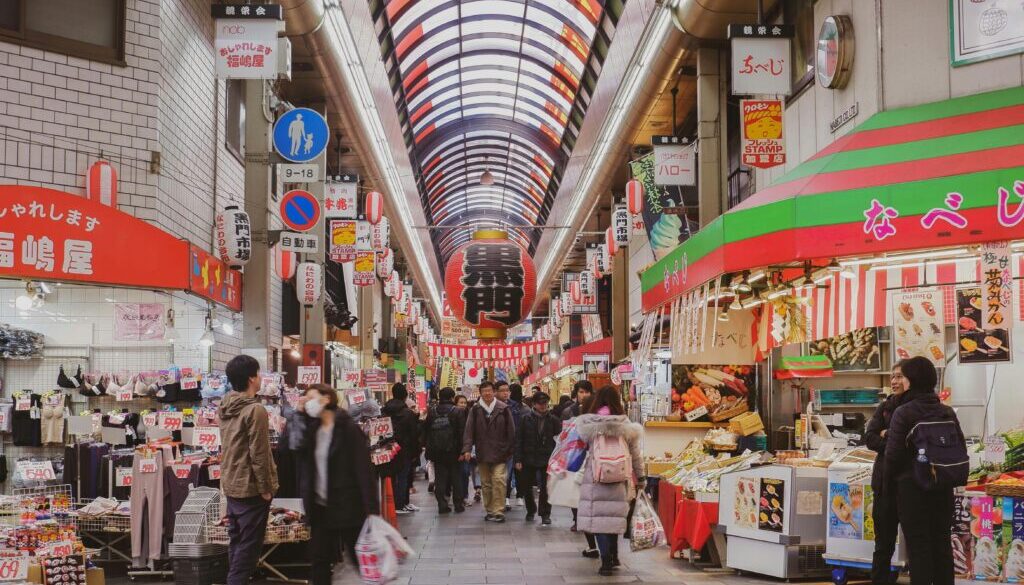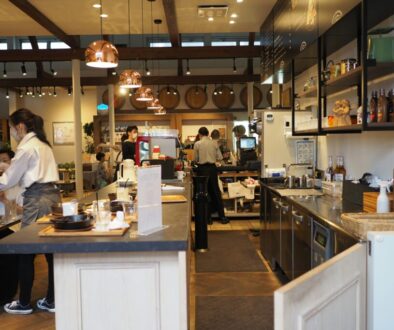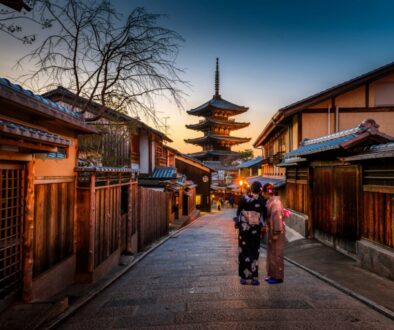Osaka is famously called “Japan’s Kitchen” for a reason. The city has long been a hub for trade, food innovation, and of course, seafood. From lively markets where locals shop daily to wholesale centers supplying Japan’s top restaurants, Osaka’s fish markets are an essential part of the city’s culinary identity.
In this guide, we’ll explore the best Osaka fish markets: Kuromon Market, Osaka Central Wholesale Market, and the more local Kizu Fish Market. You’ll learn what to eat, when to visit, and which seafood specialties, like tuna and fugu, you shouldn’t miss.
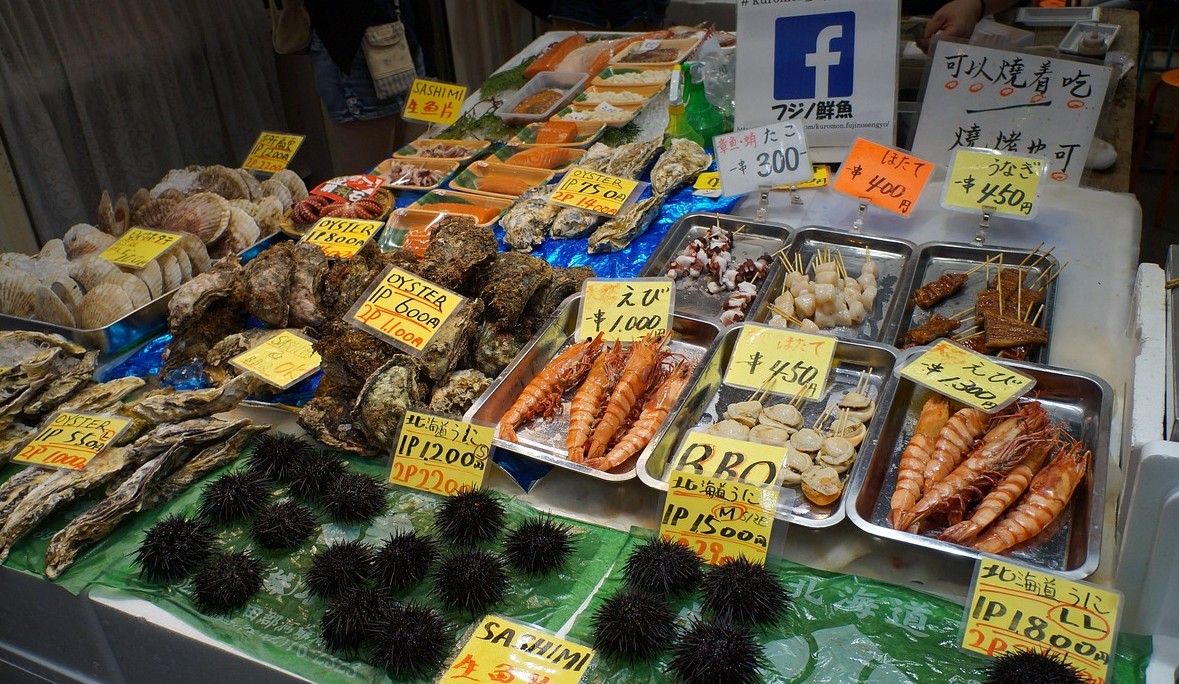
Kuromon Market Osaka’s Kitchen for Tourists and Locals
Located just steps from Namba, Kuromon Market is Osaka’s most famous food market. Nicknamed “Osaka’s Kitchen,” it’s been serving chefs, locals, and food lovers for over 100 years. Today, it attracts both residents and visitors eager to taste fresh seafood and local street food.
The name Kuromon (黒門) literally means “Black Gate.” It comes from the history of the nearby Enmyō-ji Temple (圓明寺) in Osaka. The temple once had a large black-painted main gate, which became a local landmark. Even after the temple and its gate were destroyed by fire in1912, people continued to call the surrounding area “Kuromon” because of the gate’s reputation.
When the market grew in the Meiji era as a place for fish and produce vendors to gather, it naturally adopted the name Kuromon Ichiba (Black Gate Market). Today, the temple is gone, but the market keeps the name. The “black gate” history is still noted on plaques and signs around the area.
Our Kuromon Market Recommendations
If you’re looking to experience the very best of Kuromon Market, here are several top-recommended stalls and culinary highlights. Each one is a standout among food lovers and local guides.
Speaking of guides, Ninja Food Tours offers a guided food tour of the Namba area, and we go into the Kuromon market and introduce some of our favorite stops! Check it out here!
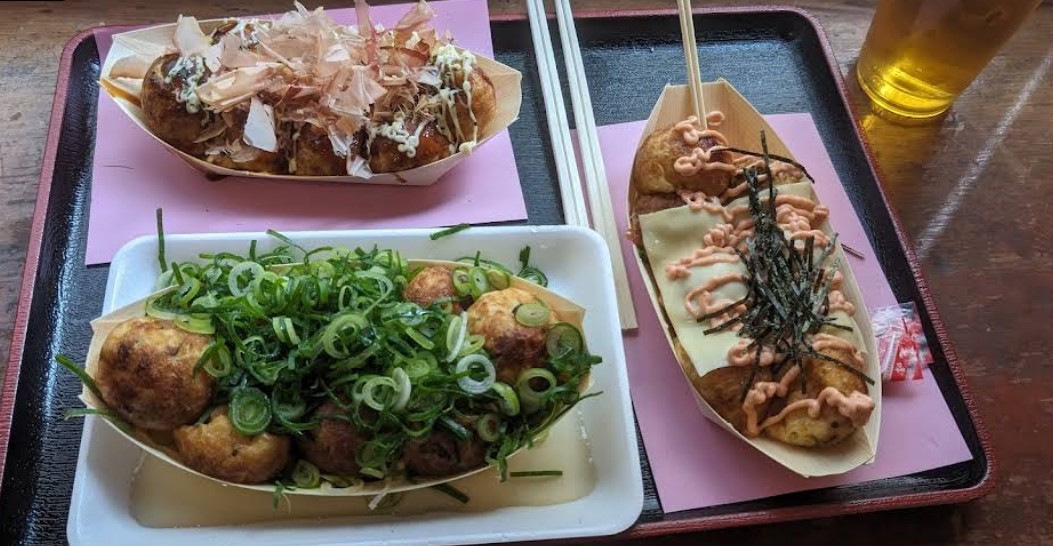
Traveler Tips:
- Most shops are open from 9:00 AM to 4:00 PM.
- Closest stations: Nippombashi Station or Namba Station.
- Visit the Kuromon Market in the morning to early afternoon when stalls are fully stocked but crowds are manageable.
Want to know more about the Kuromon Market? Check out their official website here!
Visit the Kuromon Market here!
Takoyaki Wanaka
Famous across Osaka, this takoyaki stall serves up piping hot octopus balls. They are crispy on the outside, creamy on the inside, and topped with delicious sweet takoyaki sauce. This takoyaki is a flavorful must-try that embodies Osaka’s love for street food.
The takoyaki at Wanaka is special thanks to a specially crafted batter made from finely milled flour and a flavorful dashi base. This makes it extra delicious!
You can personalize your takoyaki with a range of toppings that exceed the basic takoyaki sauce. You can top it with condiments like salt, mentaiko mayo, cheese, and more. While you’re there, make sure to watch how the chefs prepare the takoyaki. The making of takoyaki is a performance in itself. The chefs expertly and swiftly turn each takoyaki ball to circular perfection.
Visit Wanaka HERE (other locations, too!)
Visit their official website HERE.
Ishibashi Shokuhin
Ishibashi Shokuhin is a warm, no-frills side dish and oden stall. Specializing in “sozai” (homestyle prepared dishes) and oden, it’s a go-to spot for everyday Japanese flavors and market soul food.
Oden, a winter staple of simmered daikon, konnyaku, tofu, and fish cake in savory-dashi broth, is the star attraction here. The ingredients soak up rich umami, offering a cozy, warming experience. Their broth is seasoned to perfection, and the oden will leave you feeling satisfied and happy.
Other homestyle side dishes, like simmered vegetables and fish-based sozai, are attractively priced and filling. You can easily put together a satisfying meal for under ¥1,000. Overall, this stall is very local-friendly and delicious!
Visit Ishibashi Shokuhin here!
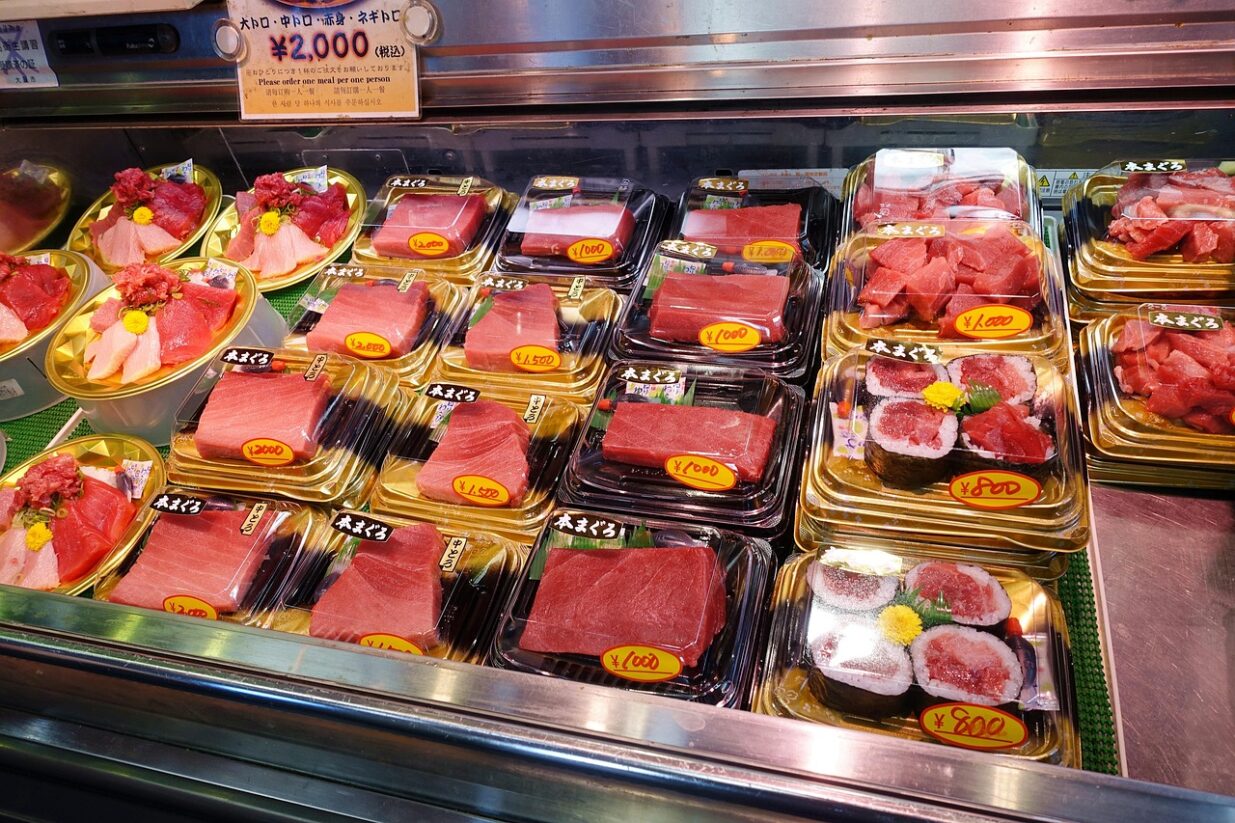
Maguroya Kurogin (まぐろや黒銀)
Maguroya Kurogin is a celebrated tuna specialty shop nestled inside Kuromon Ichiba Market. It offers both takeout and cozy eat-in counter seating, where visitors can enjoy premium tuna dishes while soaking in the liveliness of the market.
As a dedicated tuna shop, Kurogin allows you to choose your favorite cut from the tuna, from rare kama-toro (tuna collar), to ō-toro (fatty tuna), chū-toro (medium-fatty tuna), and even premium akami (lean, red meat). You can watch chefs expertly prepare it right before your eyes. This is one of those places that turns first-time visitors into repeat fans. Just make sure you get there before 4 pm!
Visit Kurogin here!
And check out their official website here!
Uokazu – Seafood bowl and Sashimi
Uokazu, also referred to as “Kaisen-Don Specialty Uokazu,” has transformed from a traditional fish wholesaler into a celebrated seafood eat-in spot right inside the market.
Known as a popular seafood izakaya, Uokazu often sees lines of eager patrons. Featured in magazines, TV programs, and travel guides, it’s famed for its generous seafood bowls. Their most popular dishs are their kaisendon (seafood donburi), which overflow with various toppings, such as salmon, salmon roe, uni (sea urchin), or even a whole snow crab.
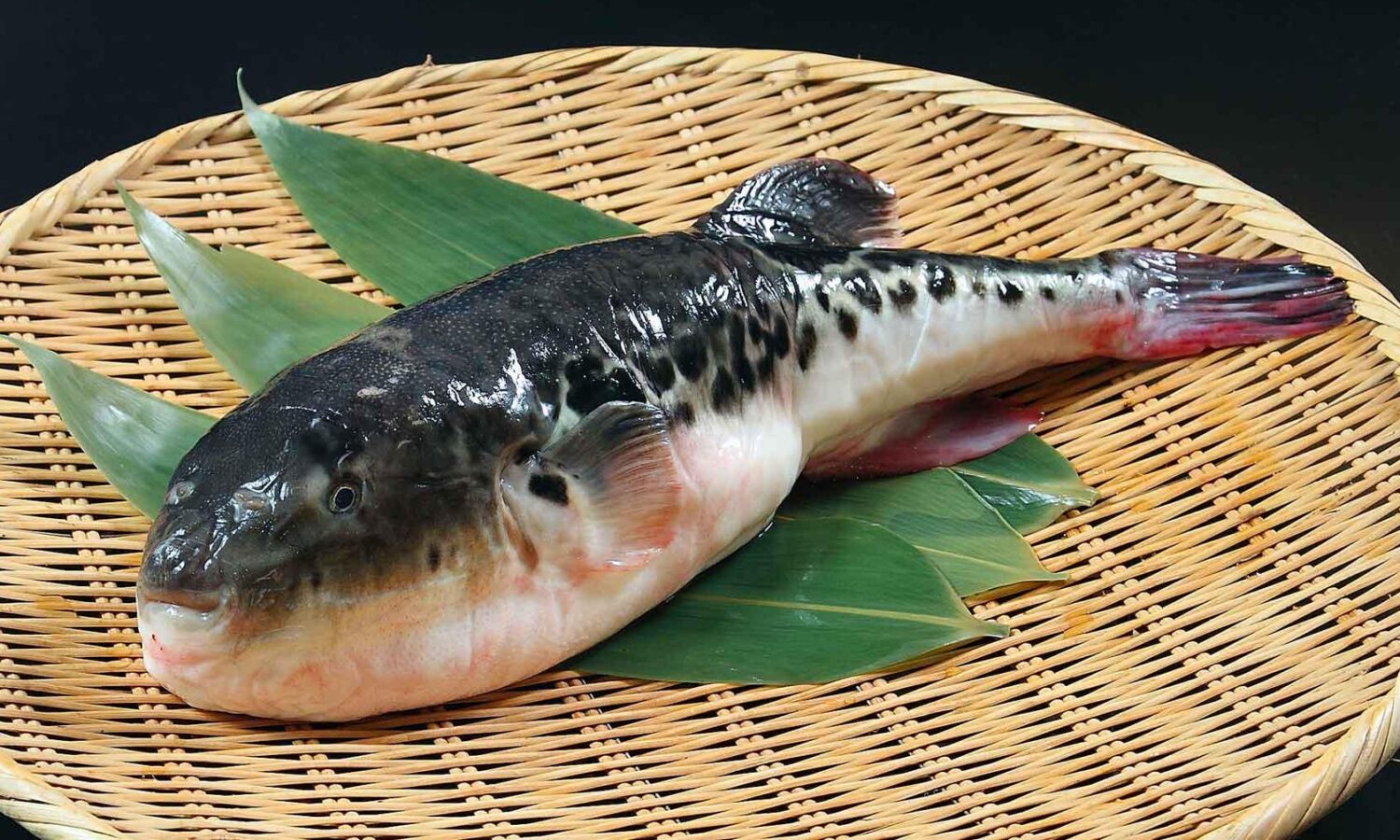
Fugu at Minami Fish Store
Always wanted to try puffer fish but never had the chance? Then make sure to stop at Minami Fish Store! They are a dedicated pufferfish (fugu) specialty shop. Here, they offer everything from fresh blowfish to prepared dishes and seasonings. It stands out as one of the few specialist stalls focusing solely on safe, authentic fugu dining.
With a wide array of fugu products, ranging in size and sourced both from natural habitats and farms in Nagasaki Prefecture, Minami delivers the premium flavor Osaka locals call “the best winter delicacy.” Their Tiger Fugu sashimi, served from a live tank and priced at around ¥2,000 per plate, is particularly stunning and unforgettable.
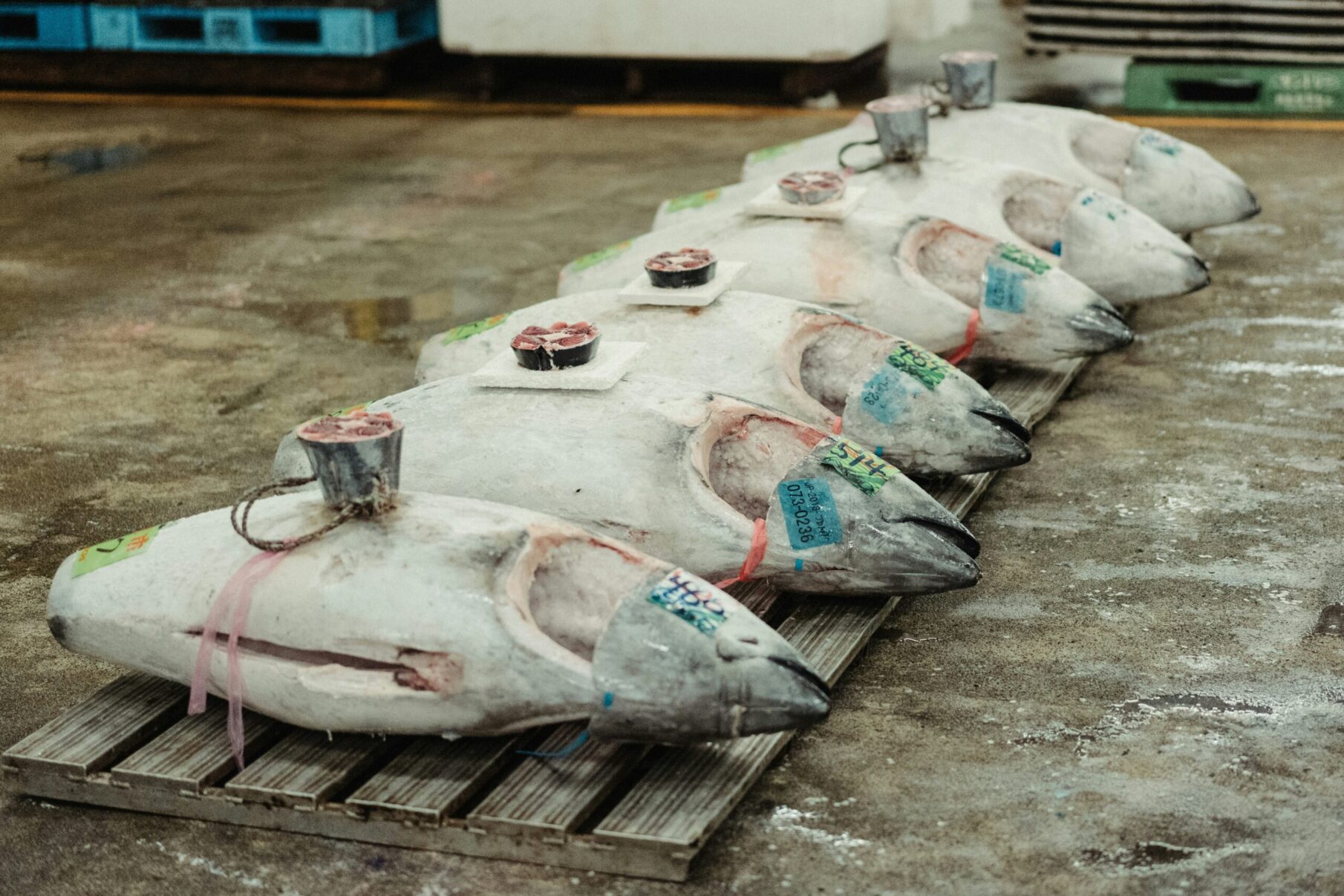
Osaka Central Wholesale Market Where the Professionals Go
If Kuromon is for everyday eaters, the Osaka Central Wholesale Market is where the professionals go. This is the city’s largest fish market and the backbone of Osaka’s seafood trade, comparable to Tokyo’s Toyosu Market.
Here, you’ll find the main hub for tuna auctions, fugu (pufferfish), and every kind of seafood imaginable. The market supplies Osaka’s top sushi bars, kaiseki restaurants, and neighborhood izakayas, making it a crucial stop in the city’s food chain.
Traveler Tips:
- Best visited early morning (around 5–7 AM).
- Limited public access, so going with a guide can provide insider access and context.
- Location: Near Noda Station on the JR Osaka Loop Line.
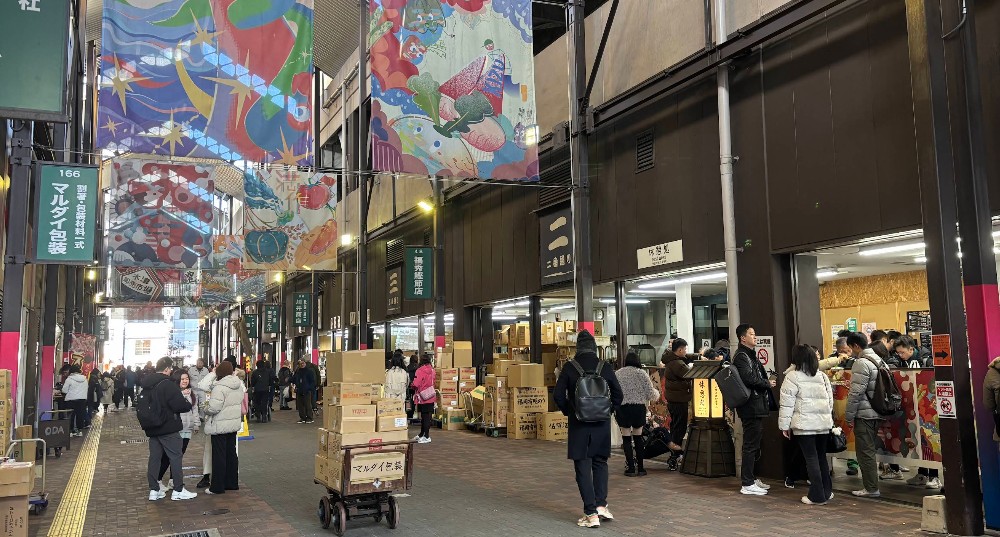
What Makes It Special
- Scale & Variety: Over 200 wholesalers operate here, offering fresh tuna, shellfish, eel, and seasonal catches direct from fishing ports.
- Fugu Expertise: Osaka is famous for its fugu, and this market is one of the safest and most regulated places to source it. Licensed specialists handle the preparation and distribution.
- Early-Morning Energy: Like Tokyo’s tuna auctions, mornings are the most exciting time to visit, when professionals bid for the day’s best catch.
- Not Just Seafood: The market also handles fruits, vegetables, meat, and specialty products, serving as a one-stop supply hub for the city’s restaurants.
What to Expect
Compared to the other Osaka fish markets, this market is primarily wholesale. They supply restaurants across the entire Kansai region. Visitors won’t find as many tourist-oriented stalls, but those who come early in the morning may witness the tuna auctions. These are a dramatic display of Japan’s seafood culture. Watching skilled fishmongers inspect, bid, and cut giant tuna is a truly memorable experience!
Visiting the Osaka Central Wholesale Market by yourself can be done, but we recommend going with a guide. Specific tours for this don’t exist, but we are sure a private tour guide would be happy to show you around!
Visit the Osaka Central Wholesale Market here!
Learn more about the Osaka Central Wholesale Market here!
Kizu Market Osaka’s Traditional Wholesale Fish Market
Just west of Namba, Kizu Market is one of Osaka’s oldest wholesale markets, operating for over 300 years.
While Kuromon Market is more famous with tourists, Kizu remains a working market where chefs, restaurant buyers, and serious home cooks source fresh seafood, meat, and produce at wholesale prices. Visiting Kizu offers travelers a glimpse into the authentic side of Osaka’s food culture and Osaka fish markets.
The name “Kizu” (木津) refers to the local area near the Kizugawa River, historically a hub for waterborne trade in Osaka. Since the Edo period, the market has been a gathering spot for fishmongers and vendors supplying the city’s restaurants.
Unlike the polished arcades of Kuromon, Kizu retains a down-to-earth atmosphere, with energetic auctions and bustling early-morning crowds.
Alongside the main market, the complex also features a supermarket for everyday goods, a restaurant where you can try dishes made with market-fresh ingredients, and even a hot spring facility with a bedrock sauna and open-air bath. This is a destination for more than just shopping!
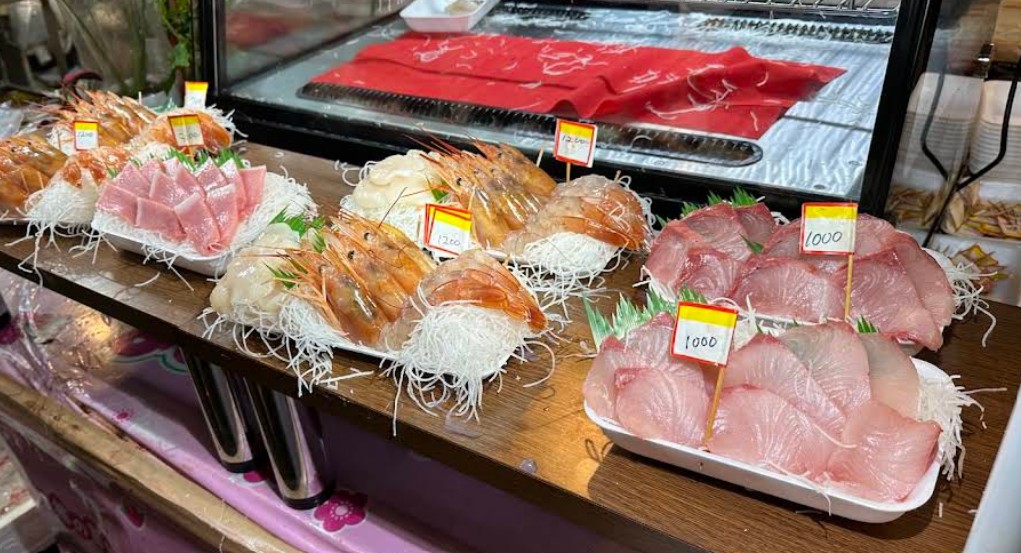
What to Eat
Kizu Market is less about street food snacking and more about fresh, restaurant-quality ingredients. Still, visitors can sample dishes at several small eateries inside the market:
- Fresh kaisen-don (seafood rice bowls) with tuna, salmon, or uni at Uoichi
- Breakfast sushi and sashimi served fresh from the morning’s catch at Maruyoshi Sushi
- Plus various supermarkets where you can buy fresh cuts of fish, shellfish, and vegetables to cook and prepare yourself!
Traveler Tips
- Opening hours: While auctions happen early in the morning, it is best for travellers to visit from 8 am to 12 pm for morning sushi and other fresh food. The market is closed on Sundays and Wednesdays.
- Closest stations: Daikokucho Station (Osaka Metro) or Imamiyaebisu Station (Nankai-Koya Line).
- Wear comfortable shoes. The market floor can be wet and busy.
- Unlike Kuromon, English signage is limited, so bring cash and be ready for a local experience.
Visit the Kizu Market here!
Want to visit the bathhouse here? Visit it here!
If you are looking for a more in-depth guide to the Kizu market, visit this blog post here!
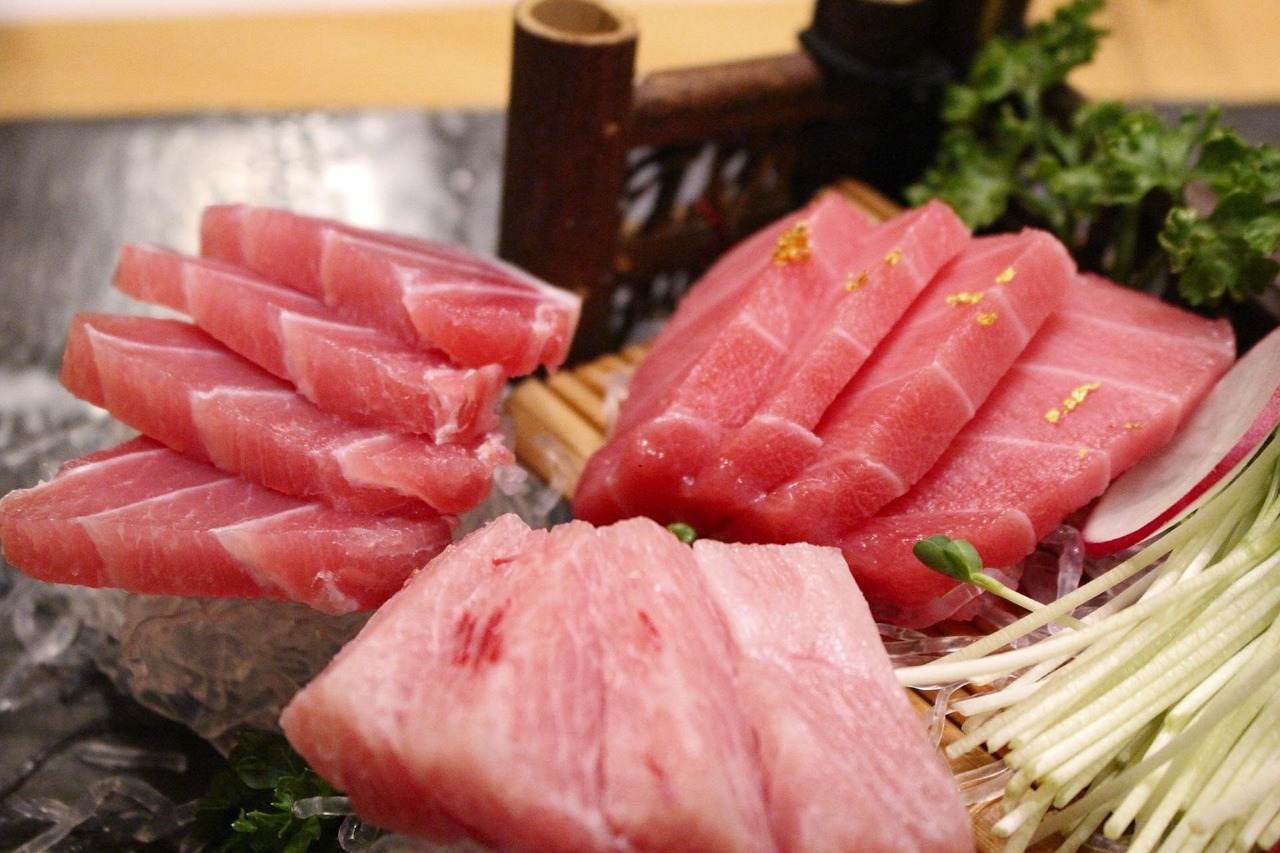
Iconic Seafood to Try in Osaka
Exploring Osaka’s fish markets is not just about watching the action. It is also the perfect place to taste some of Japan’s most famous seafood. From premium tuna cuts to adventurous dishes like fugu, visitors can experience flavors that define Kansai’s food culture.
Tuna (Maguro)
Maguro is the star of every Japanese fish market, and Osaka is no exception. You can try everything from buttery otoro (fatty tuna) to deep-red akami (lean tuna).
Many stalls serve tuna as sushi or sashimi, often at prices far lower than high-end restaurants. Watching a whole tuna being expertly cut is also a highlight for market visitors.
Fugu (Pufferfish)
Osaka is considered the best place in Japan to try fugu, the famous pufferfish delicacy. It is available as paper-thin sashimi slices, crispy fried bites, or simmered in a warming hot pot.
Because of its natural toxins, only certified chefs are legally allowed to prepare it. For travelers, this makes tasting fugu in Osaka both safe and unforgettable.
Want to learn more about fugu? Check out this website here!
Other Seafood Highlights
- Uni (sea urchin): Sweet and creamy, often served on sushi rice.
- Scallops and oysters: Grilled to order at market stalls or enjoyed raw with fresh lemon.
- Kansai-style sushi: Known for pressed sushi, or oshizushi, which is different from Tokyo’s hand-shaped style.
- Street snacks: Grilled squid skewers and seafood tempura are perfect for a quick bite while exploring.
Whether you are a sushi lover or just curious about Osaka’s seafood traditions, these iconic market foods offer a true taste of the city’s culinary identity.
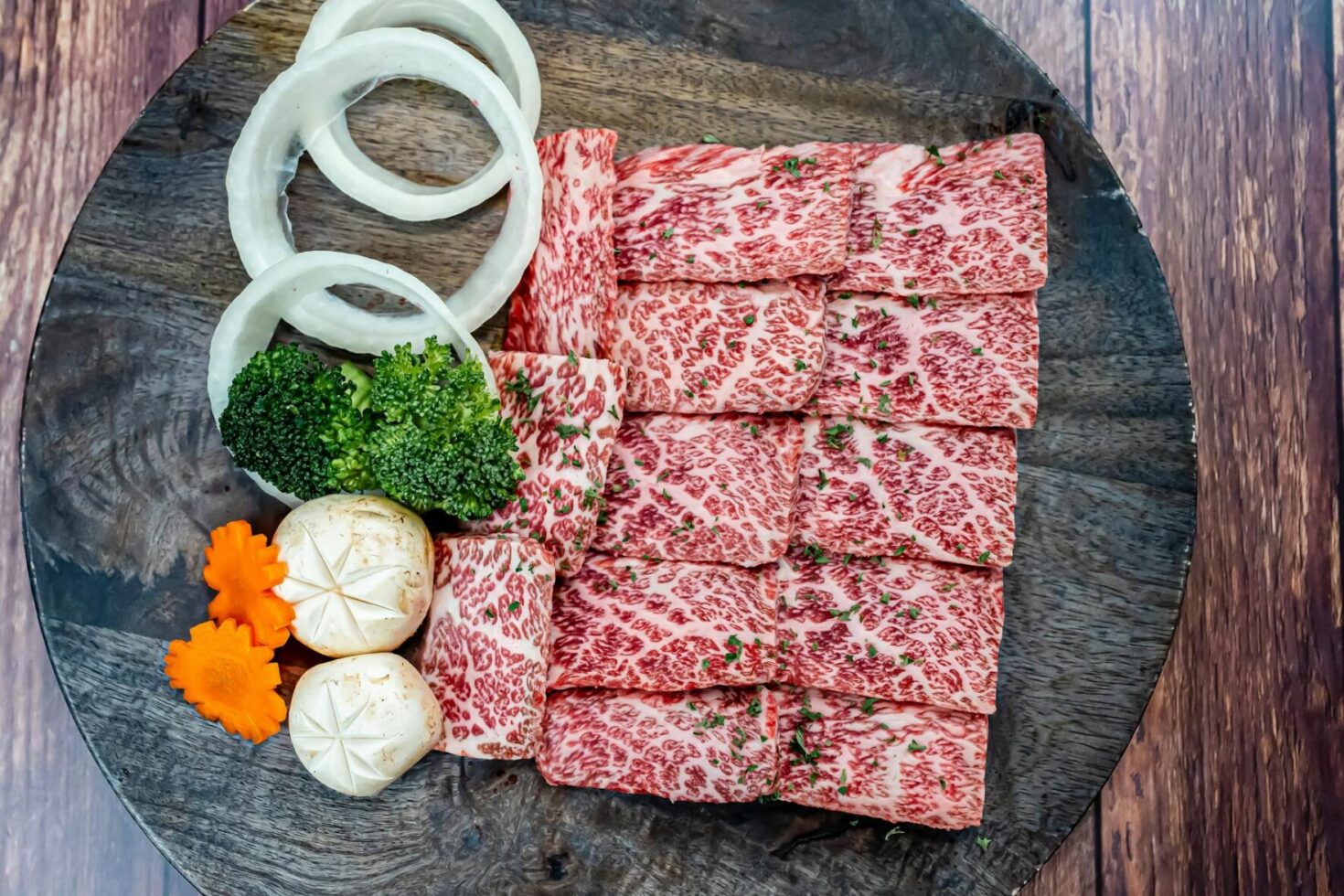
Beyond Seafood Extra Market Eats
While Osaka’s fish markets are best known for their incredible seafood, visitors will also find plenty of other flavors that showcase the city’s diverse food culture. These extra bites make the markets worth exploring even if you are not a seafood lover.
Wagyu Beef Skewers
Juicy skewers of Wagyu beef are a must-try for meat lovers. Grilled to order, these skewers highlight the marbling and tenderness of Japan’s most famous beef. The rich flavor makes them a perfect contrast to lighter seafood dishes.
Want to learn more about wagyu beef? Check out this website for more information!
Okonomiyaki
Throughout Osaka, you can find eateries serving okonomiyaki, Osaka’s signature savory pancake. Made with cabbage, pork, seafood, and topped with a drizzle of sweet-savory sauce and bonito flakes, it is a filling option after a morning of exploring market stalls.
Seasonal Fruits
Japanese markets are also known for high-quality, seasonal fruits. Visitors can sample sweet strawberries, crisp apples, muscat grapes, or perfectly ripened melons. Some stalls sell fruit-on-a-stick or freshly cut portions, making it easy to snack while walking.
Traditional Japanese Sweets
To finish on a sweet note, try wagashi (traditional Japanese sweets). Popular options include taiyaki (fish-shaped cakes filled with sweet bean paste), mochi daifuku, and dorayaki pancakes. These treats pair well with green tea and give travelers a taste of Japan’s dessert culture.
Visiting Fish Markets in Osaka FAQs
Q1: What time do Osaka fish markets open?
For the Osaka Central Wholesale Market, most of the wholesale activity begins at 4 am and finishes around 8 am. Public visitors often arrive later, around 9 am, when retail shops and small eateries open. For the Kuromon Market, we recommend arriving around 10 or 11 am when shops open. Be careful, though, as these fish markets tend to close around 4 pm.
Q2: Can tourists visit the Osaka Central Wholesale Market?
Yes, tourists are welcome in designated areas. While the wholesale auctions are primarily for licensed buyers, many restaurants and stalls open to the public, offering fresh sushi, sashimi, and seafood bowls. For a more casual experience, we recommend going to the Kuromon Market.
Q3: Do I need to follow any manners when visiting fish markets in Osaka?
Visitors should avoid blocking walkways, especially during peak morning hours when professionals are working. Always ask before taking photos, keep noise to a minimum, and do not touch the displayed seafood. Finally, eating and walking is often prohibited in busy markets, so make sure to eat inside the shops.
Q4: Is it safe to eat fugu (pufferfish) in Osaka?
Yes, fugu is strictly regulated in Japan. Only chefs with special licenses are allowed to prepare it, making Osaka one of the safest places to try this delicacy. Make sure to give it a try!
Q5: What are the differences between Kuromon Ichiba Market and the Osaka Central Wholesale Market?
Kuromon Ichiba caters to locals and tourists, with plenty of street food stalls and ready-to-eat snacks. The Osaka Central Wholesale Market is larger, primarily serving professionals, but it also has some restaurants and shops open to the public.
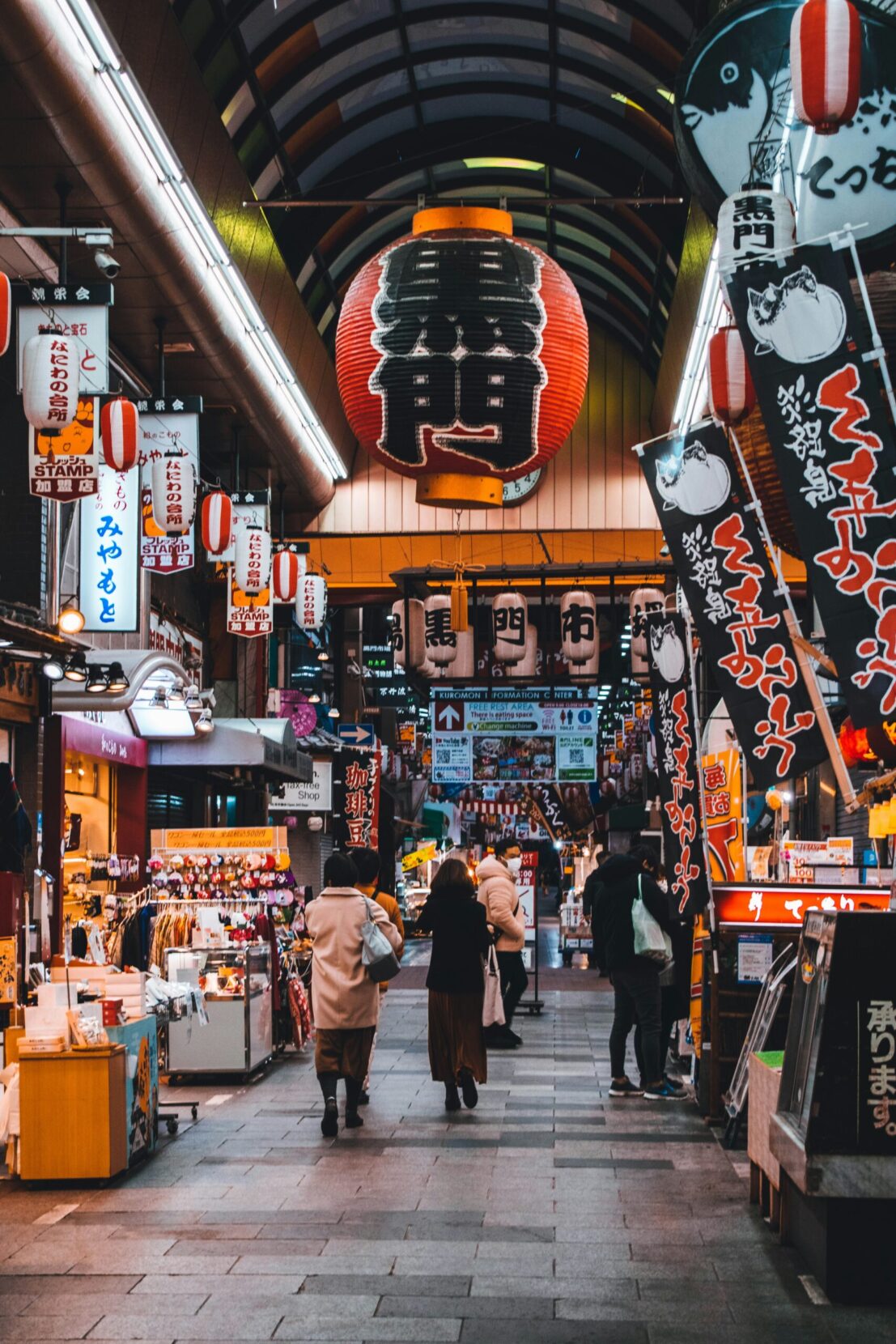
Q6: What should I eat if I only have a short time at the market?
Try some fresh tuna sashimi for a quick but authentic experience. If you are feeling adventurous, order a small plate of fugu sashimi or uni (sea urchin).
Q7: Which train stations are closest to the main fish markets?
- Osaka Central Wholesale Market: About 10 minutes from Osaka Station, with JR Noda Station being the nearest stop.
- Kuromon Market: Easily accessible from Nippombashi Station on the Osaka Metro.
- Kizu Market: Daikokucho Station (Osaka Metro) or Imamiyaebisu Station (Nankai-Koya Line).
Q8: Are Osaka fish markets accessible for travelers with limited mobility?
Yes, most markets have wide aisles and barrier-free access. However, early-morning wholesale areas can be crowded and fast-paced. Visitors using wheelchairs or strollers may find mid-morning hours more comfortable.
Q9: Is it worth joining a guided food tour of Osaka’s Kuromon Market?
A guided food tour is recommended for first-time visitors. Guides provide insider access, explain local food culture, and help you try specialties like fugu or Wagyu without hesitation. If you would like to join a food tour, why not join us at Ninja Food Tours? We lead a Namba food tour, where we go through the Kuromon Market and point out our favorite stops! Check it out here!
Must-Visit Shopping Streets in Osaka Beyond Seafood
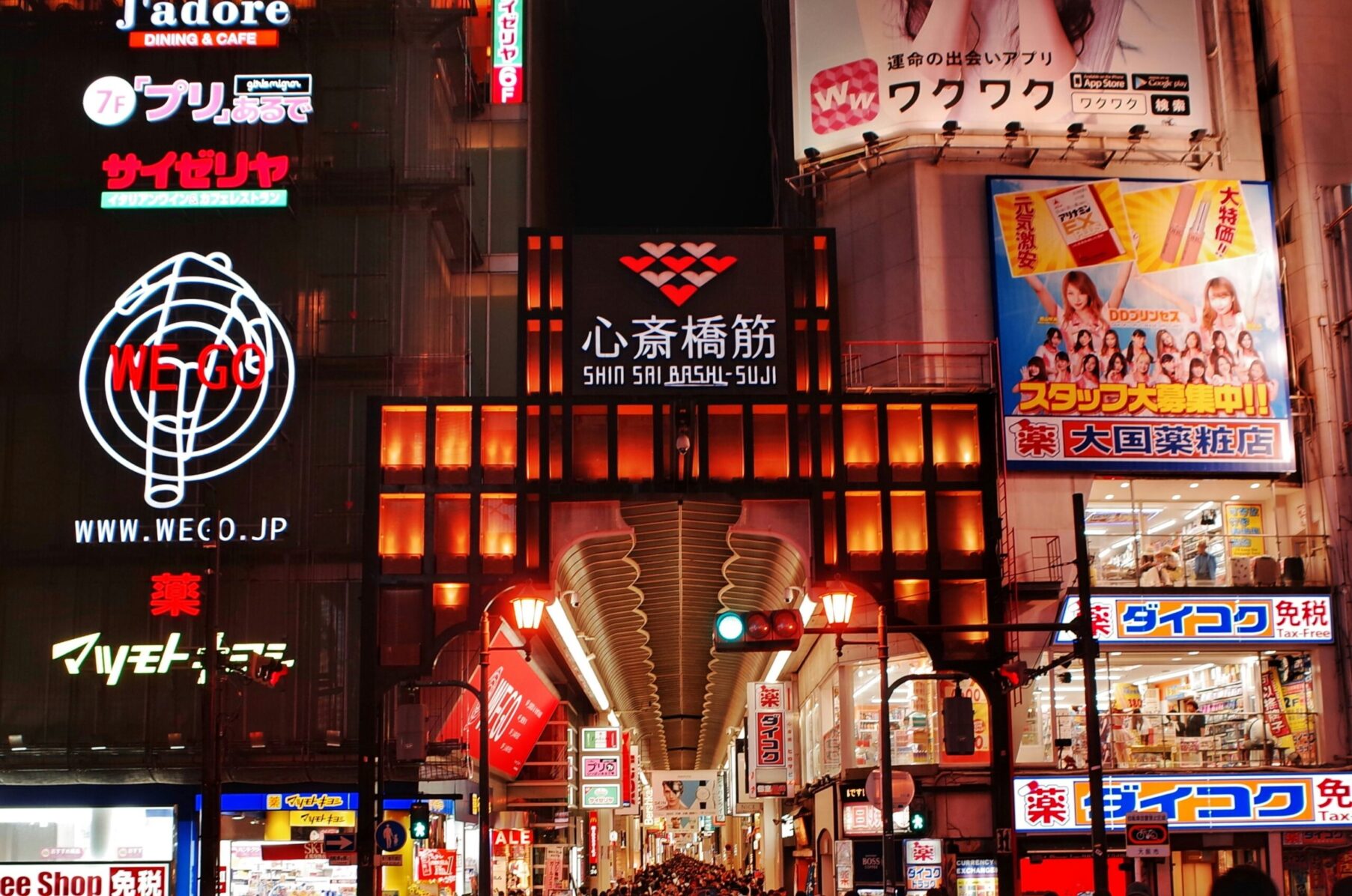
Shinsaibashi-suji Shopping Street
Shinsaibashi-suji is Osaka’s most famous covered shopping arcade, stretching nearly 600 meters and lined with everything from international fashion brands to local boutiques. Known for its mix of modern shops, cosmetics, and souvenir stalls, it’s a hotspot for travelers who love shopping and nightlife. Street food stalls and cozy izakayas hide in side alleys, making it a great all-day destination.
Best for: Fashion lovers, first-time visitors, and travelers combining shopping with a lively night out in nearby Dotonbori.
Tenjinbashi-suji Shopping Street
At 2.6 km long, Tenjinbashi-suji holds the title of Japan’s longest shopping street. Unlike the flashy hubs of Shinsaibashi, this area feels more local and authentic, with retro candy shops, traditional tea houses, and casual eateries serving Osaka comfort food. It’s less touristy, so you can wander at your own pace while soaking in everyday Japanese life.
Best for: Travelers who enjoy slow travel, culture, and food exploration off the beaten path.
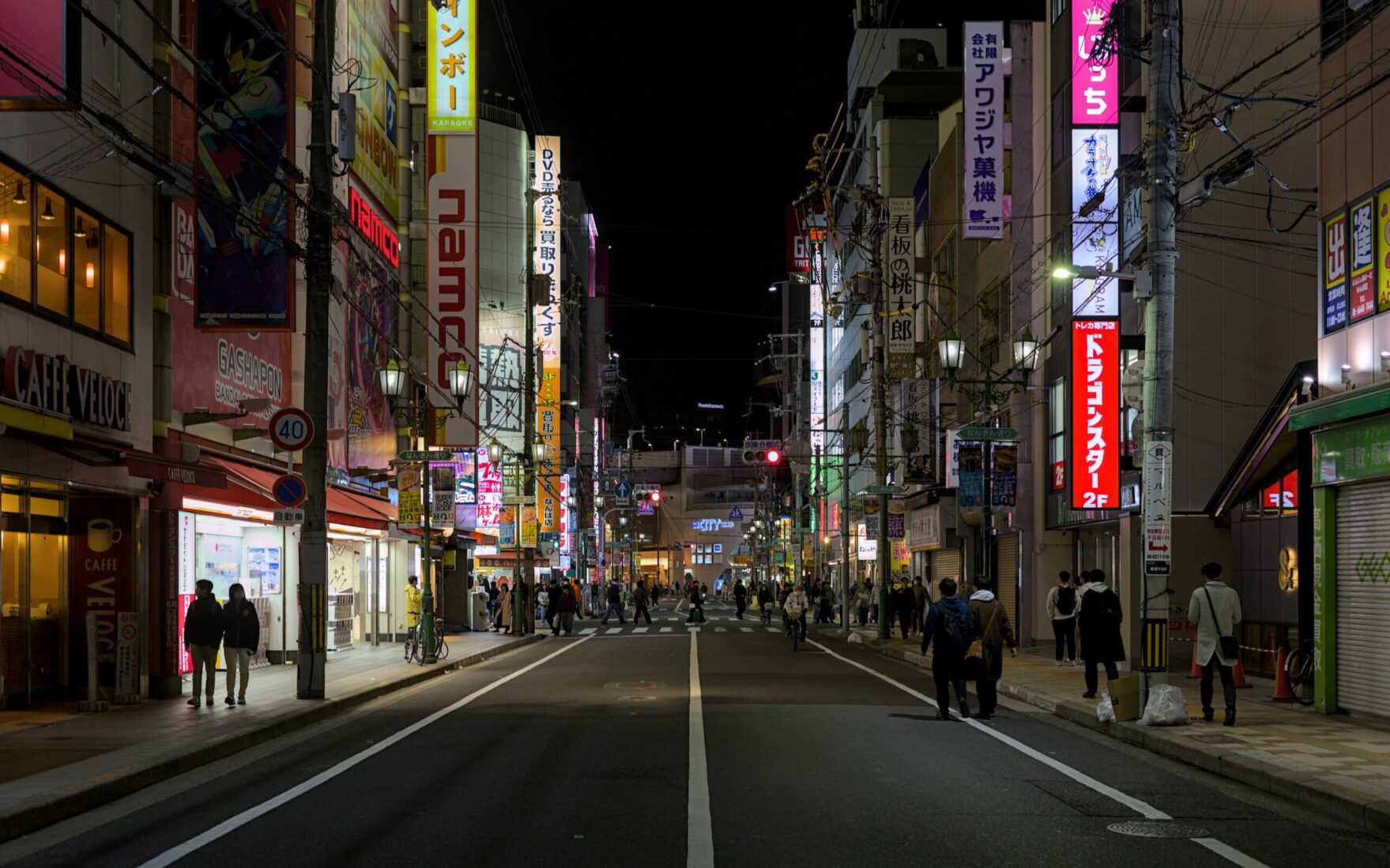
Nipponbashi Den Den Town
Nipponbashi Den Den Town is Osaka’s electric town, a paradise for gamers, anime fans, and collectors. Often compared to Tokyo’s Akihabara, the district is packed with manga shops, retro video game stores, quirky figurine stalls, and electronics outlets. Even non-gamers will enjoy the vibrant subculture energy and endless photo ops.
Best for: Anime and gaming enthusiasts, pop culture travelers, and anyone curious about Japan’s otaku scene.
Visit Den Den Town here!
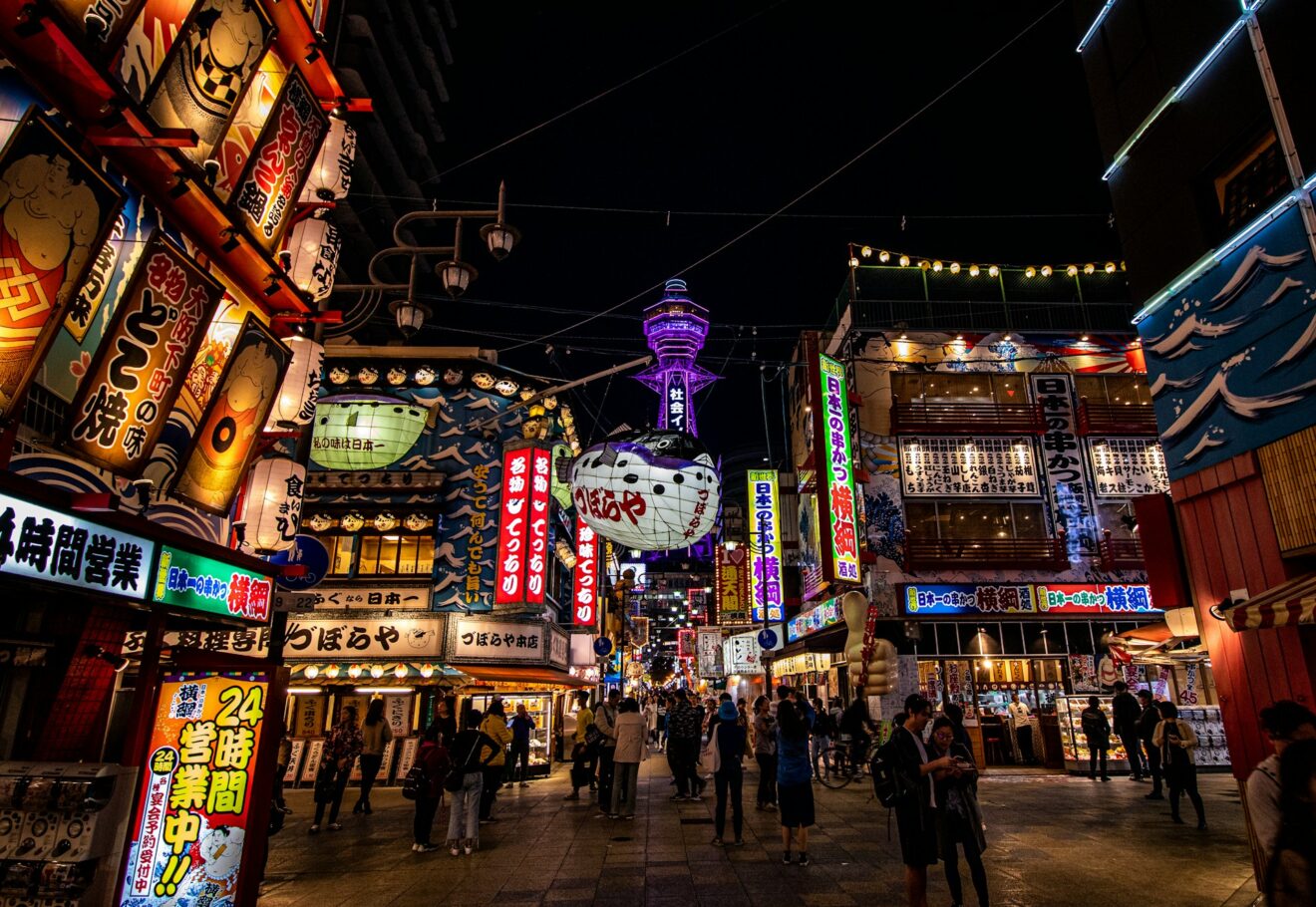
Discover the Heart of Osaka’s Food Culture
Osaka fish markets are more than just places to buy seafood. They are living symbols of why the city is called “Japan’s Kitchen,” blending tradition, trade, and everyday food culture.
From the energy of Kuromon Market to the professional auctions at the Central Wholesale Market, each stop offers a glimpse into how Osaka feeds its people and its world-class restaurants.
For travelers, the Osaka fish markets are not just about eating but about experiencing Osaka’s identity through food. Arriving early, respecting market manners, and sampling both seafood and comfort dishes will make your visit unforgettable.
Those looking for deeper insights can join a guided food tour to learn insider stories and taste hidden specialties. However you choose to explore, the fish markets of Osaka remain one of the most authentic and delicious ways to experience the city. Make sure to visit them and discover why Osaka truly deserves its title as Japan’s Kitchen!
Interested in learning about incredible sightseeing locations across Kyoto? Make sure to check out our other blog posts, such as our guide to the Nishiki Market, the history of Fushimi Inari, and an itinerary for 3 full days in Kyoto.
We also run food tours in Kyoto, Tokyo, and Osaka, so be sure to put those on your itinerary when you come to Japan!
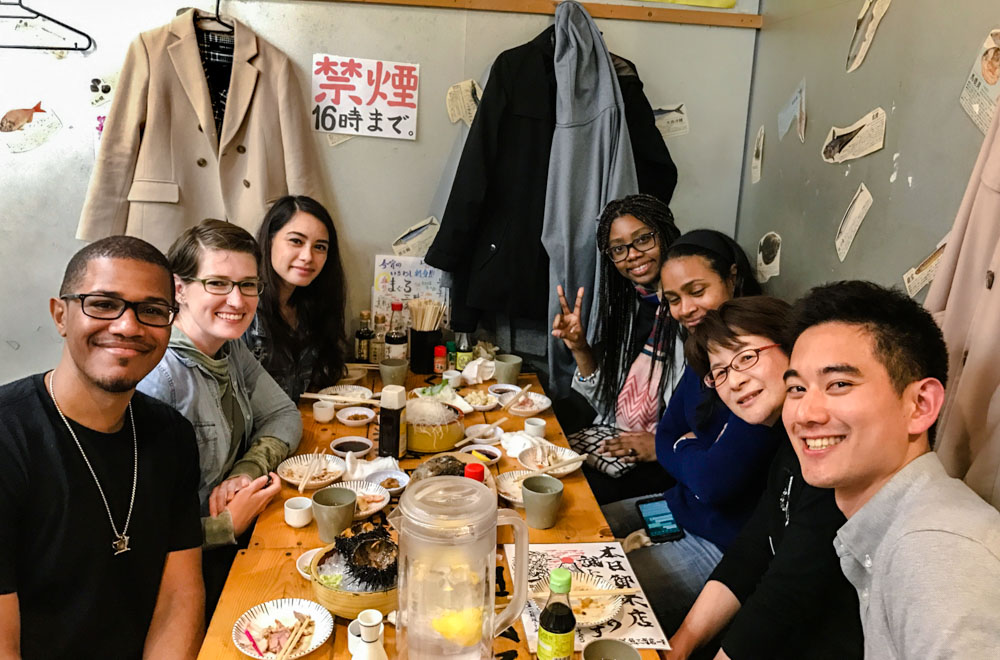
7 of the Best Tokyo Food Tours You’ll Love (With Prices & What to Expect)
Tokyo can feel overwhelming for food lovers. The city has more than 160,000 restaurants, from tiny ramen counters to lantern-lit izakayas and Michelin-starred sushi bars. It’s magical, but also intimidating if you don’t speak Japanese or know where to begin. That’s where food tours shine: they cut through the chaos and connect travelers with authentic local […]

Where to Get the Best Coffee in Kyoto: Local Favorites and Hidden Gems
Kyoto may be famous for its temples, tea ceremonies, and timeless streets, but locals know this city runs just as much on coffee as it does on matcha. Tucked between quiet lanes and bustling markets, you’ll find an ever-growing scene of cafés that blend Japanese craftsmanship with global coffee culture. From minimalist roasters pouring single-origin […]

Best Sake Bars in Kyoto: Local Favorites and Tasting Tips
Kyoto: The Heart of Japan’s Sake Culture By day, Kyoto hums with quiet grace. Temple bells echo through bamboo groves, monks stride through moss gardens, and the scent of incense drifts in the air. But when night falls, the city’s calm spirit transforms. Lanterns flicker to life in narrow alleys, laughter spills from cozy izakayas, […]
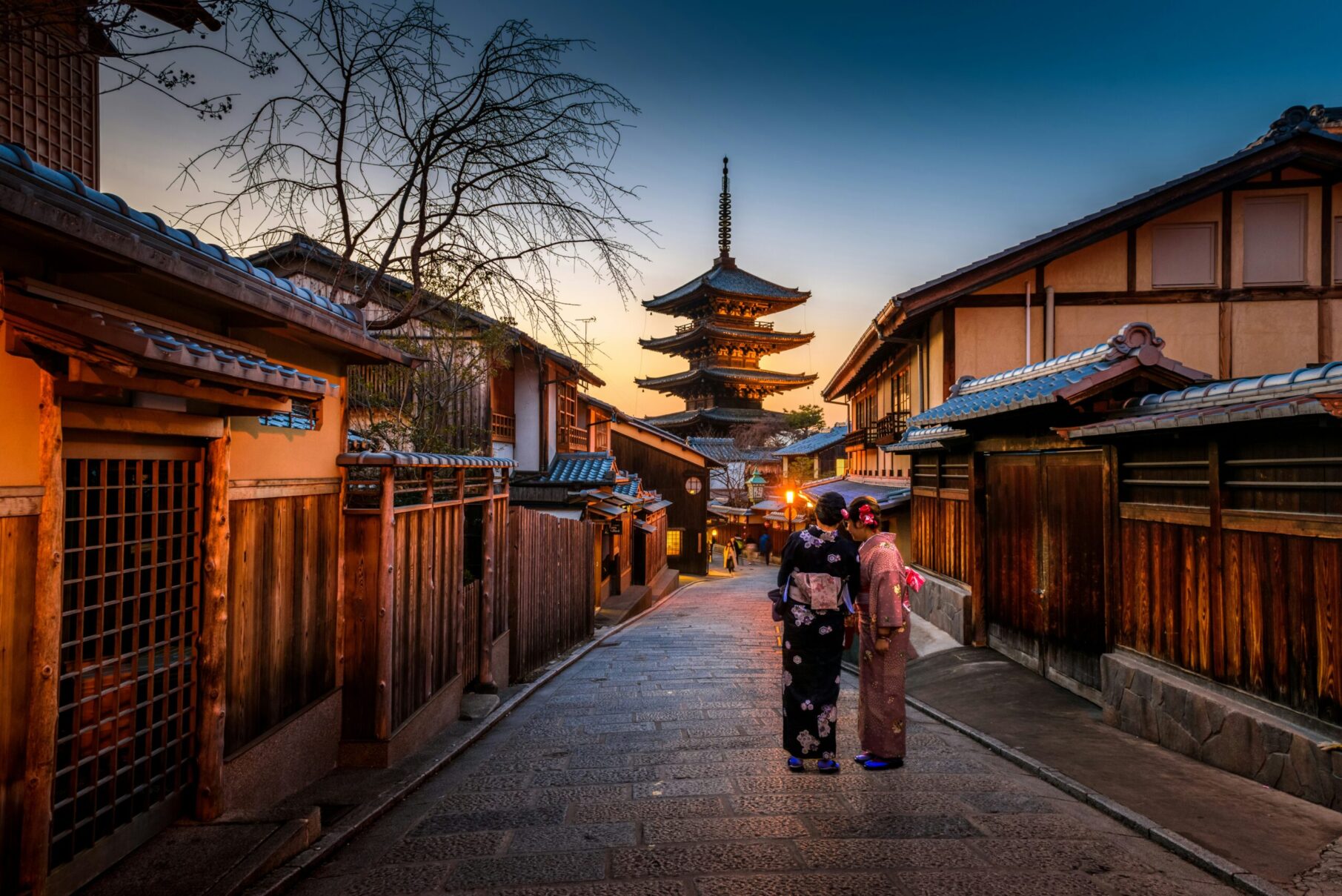
Kyoto Kaiseki on a Budget: 5 Authentic Restaurants You Can Actually Afford
Kyoto is one of the world’s great places to experience kaiseki cuisine. But what exactly is kaiseki? It is a multi-course haute cuisine rooted in respect for seasonality, ingredients, presentation, and ritual. Kaiseki is more than just food. It’s an experience: the sequence of courses, the setting (tatami room, garden view, etc.), the aesthetic of […]

